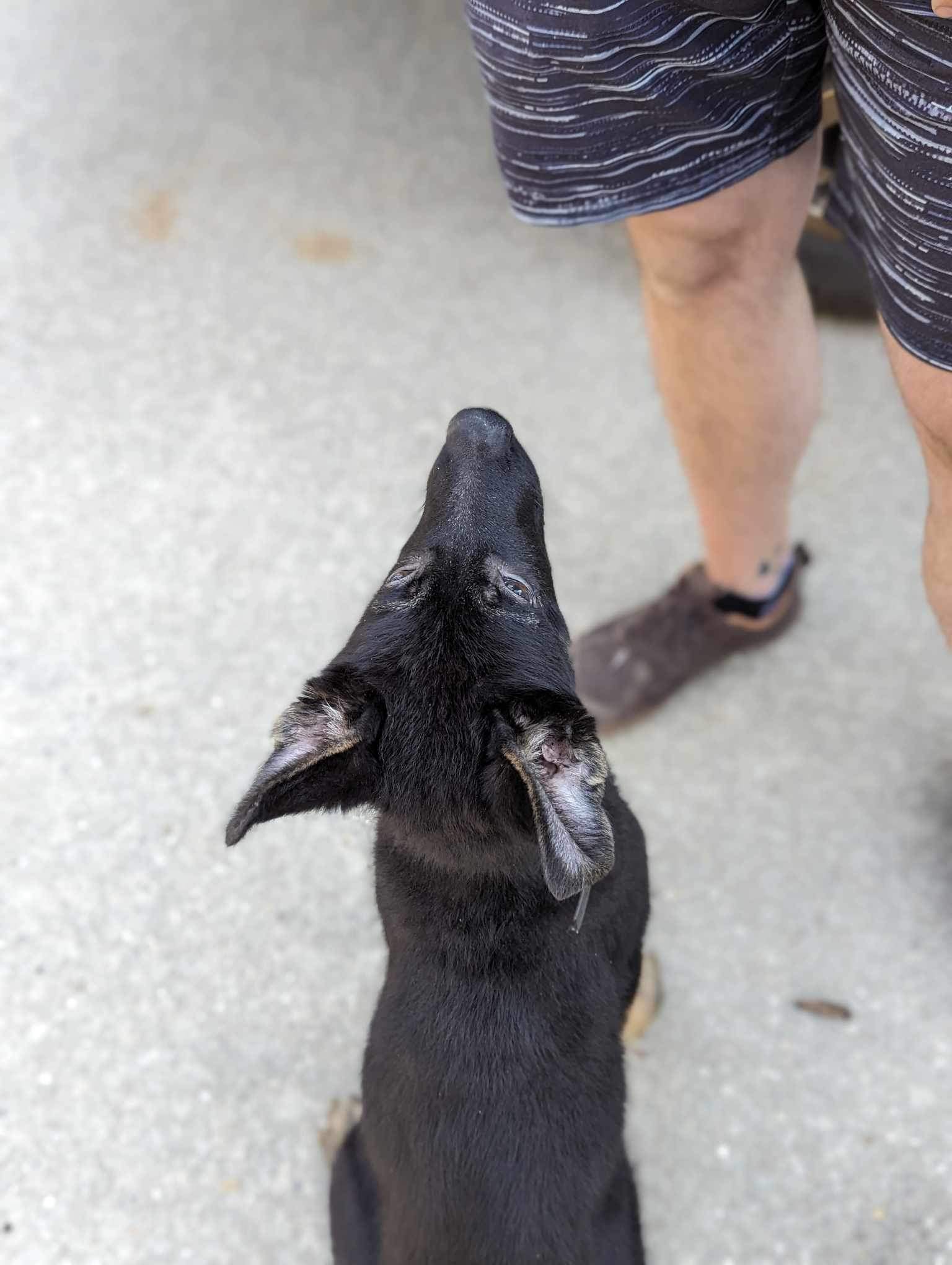Training doesn’t have to be serious to be effective.
Behavior games turn everyday training struggles into quick wins by giving your dog simple, reliable patterns they can succeed with — even when they’re overwhelmed, distracted, or just plain bouncy.
Behavior games, also known as rhythm games or pattern games, are super simple behavior patterns that we can utilize in a wide variety of ways! These can be an excellent warm-up to help our dogs get ready to train, a support game for reactivity work, a tool to regulate overexcitement during a session, or a fun way to teach skills like eye contact, recall, and loose leash walking.
The power of these pattern games is in their simplicity! When we’re experiencing big feelings and listening is hard, it’s much easier to fall back on simple, familiar behaviors than it is to execute complex tasks. If your dog is too distracted to chase a free cookie, they’re probably too distracted to heel, sit, down, stay, or come when called.
Spot & Dismiss
(aka Look at That, Engage-Disengage, Popcorn, Tattle Training)
This is a tried and true training game, utilized by trainers around the world – so there are a TON of different variations! The basic underlying goal here is to teach your dog that calmly glancing at their trigger then looking away is valuable.
- At a distance where your dog is unlikely to react, let your dog see a trigger.
- As soon as your dog looks at their trigger, mark “Yes!” and feed them. Repeat a few times, until they are reliably looking away from their trigger after you say “Yes!”
- Once your dog is good at this game, wait a few seconds before marking to see if they can look at you on their own.
- If they are stuck on the trigger, mark “Yes!” and feed before moving further away.
- If they look at you on their own, mark “Yes!” and JACKPOT! This is the true goal!
Notes:
- The real goal is to teach your dog to briefly glance at their trigger before looking back to you. Do not let your dog stare for more than ~3 seconds at their trigger; this turns into fixation and most dogs should not stare at their triggers.
- If your dog doesn’t look at you after 1-2 seconds, say “Yes!” and reward them for looking back to you.
- If your dog doesn’t look at you after you say “Yes!”, feed them anyway then make some distance from the trigger.
Up-Down Game
- Drop or place a treat on the ground for your dog to eat.
- After they eat the treat, wait for them to look at you.
- When they look up at you, mark “Yes!” and reward them with another treat on the ground.
Notes:
- You can use this to teach a “Look!” skill, aka the “Name Game”
- Make sure to mark “Yes!” the moment they look up at you.
Cookie Toss, Puppy Bowling, or Ping-Pong Game
- Say “Get it!” then toss a treat a short distance away.
- After they eat the treat, wait for them to look at you.
- When they look at you, mark “Yes, get it!” then toss another treat in another direction for them to chase.
Notes:
- Remember to say “Get it!” before you toss the cookie. Telling them lets them know to look for something to chase. Some dogs will need this more than others.
- You can use this to teach recall by tossing a cookie with “Get it!” then recalling with “Puppy, here!” followed by puppy voice. When your dog reaches you, give several treats in a row and lots of praise before repeating.
- This is a great rainy day activity to get some indoor running time.
- This is a great way to set a foundation for a Find it! scentwork game.
Counting Game or “One, Two, Three!”
- To teach this:
- Say “Three!” then deliver a treat. Repeat 2-5x.
- Next, say “Two, three!” then deliver a treat. Repeat 2-5x.
- Next, say “One, two, three!” then deliver a treat. Repeat 2-5x.
- Your dog should now look at you on “One” and keep watching you until you say “Three”
- To use this: count out loud “One, two, three!” then deliver a treat on “Three!”
Notes:
- You can play this stationary or while walking.
- Remember to keep your hands still until you are done saying “Three!”, then deliver a treat.
- If you’re using this around triggers, it’s okay if your dog doesn’t make eye contact on “Three” – feed them anyway.
- Eye contact comes naturally as a result of practicing this game in a low distraction area. Lack of eye contact indicates that we are probably a little bit too close to our trigger — take this as a cue to not move any closer. The link between “three = food” is more important than the link between “three = look at me.”
- It can help to think of this game as “One, two, three—can you look at me?”



